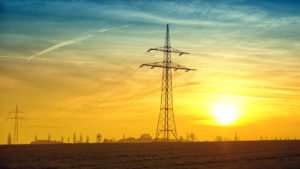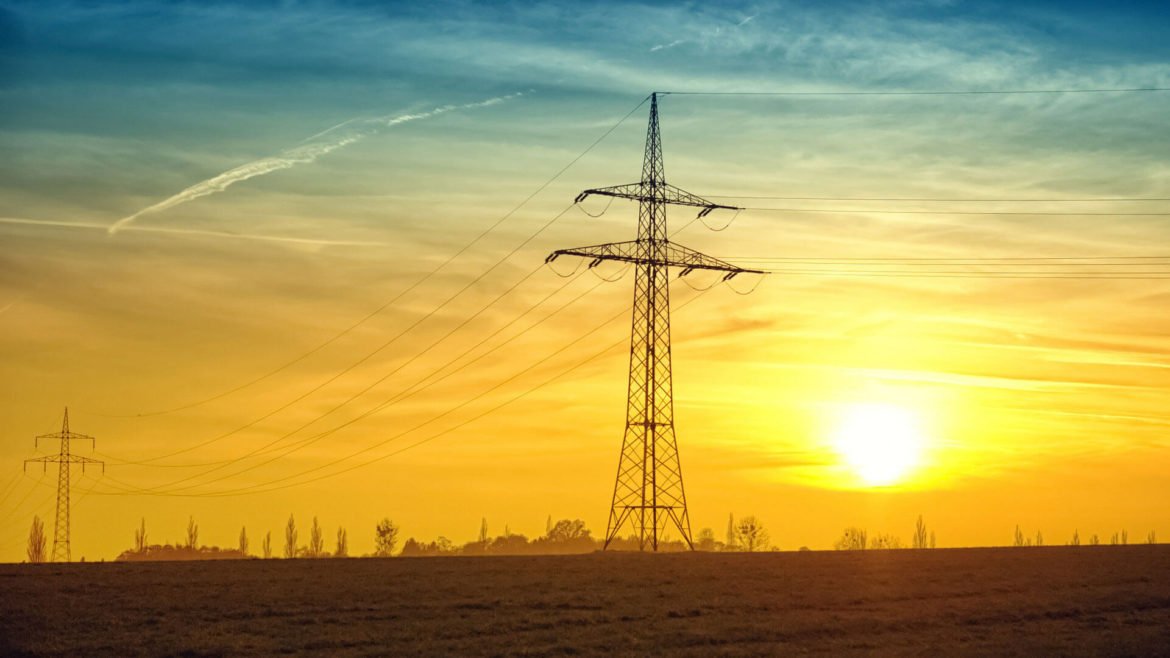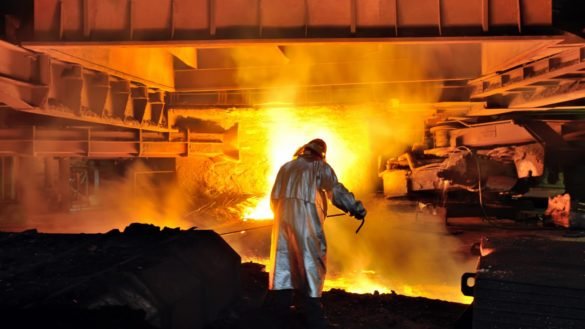An overhead power line is a structure used in electric power transmission and distribution to transmit electrical energy across large distances. It consists of one or more uninsulated electrical cables (commonly multiples of three for three-phase power) suspended by towers or poles.
Since most of the insulation is provided by the surrounding air, overhead power lines are generally the least costly method of power transmission for large quantities of electric energy.
 Towers for support of the lines are made of wood either grown or laminated, steel or aluminum (either lattice structures or tubular poles), concrete, and occasionally reinforced plastics. The bare wire conductors on the line are generally made of aluminum (either plain or reinforced with steel or composite materials such as carbon and glass fiber), though some copper wires are used in medium-voltage distribution and low-voltage connections to customer premises. A major goal of overhead power line design is to maintain adequate clearance between energized conductors and the ground so as to prevent dangerous contact with the line, and to provide reliable support for the conductors, resilience to storms, ice loads, earthquakes and other potential damage causes. Today overhead lines are routinely operated at voltages exceeding 765,000 volts between conductors.
Towers for support of the lines are made of wood either grown or laminated, steel or aluminum (either lattice structures or tubular poles), concrete, and occasionally reinforced plastics. The bare wire conductors on the line are generally made of aluminum (either plain or reinforced with steel or composite materials such as carbon and glass fiber), though some copper wires are used in medium-voltage distribution and low-voltage connections to customer premises. A major goal of overhead power line design is to maintain adequate clearance between energized conductors and the ground so as to prevent dangerous contact with the line, and to provide reliable support for the conductors, resilience to storms, ice loads, earthquakes and other potential damage causes. Today overhead lines are routinely operated at voltages exceeding 765,000 volts between conductors.
The current condition of overhead power lines are not so good. Continuous maintenance and repairs are required to maintain the transmission grid as resilient. We invest in any new technology or innovation that makes transmission network as resilient and stronger and undergo with less maintenance and repair. If you are connected with such project or your business is involved in similar projects and you are ready to retire, we can buy your business, if it fit our criteria and you can enjoy your long waiting tranquility.




